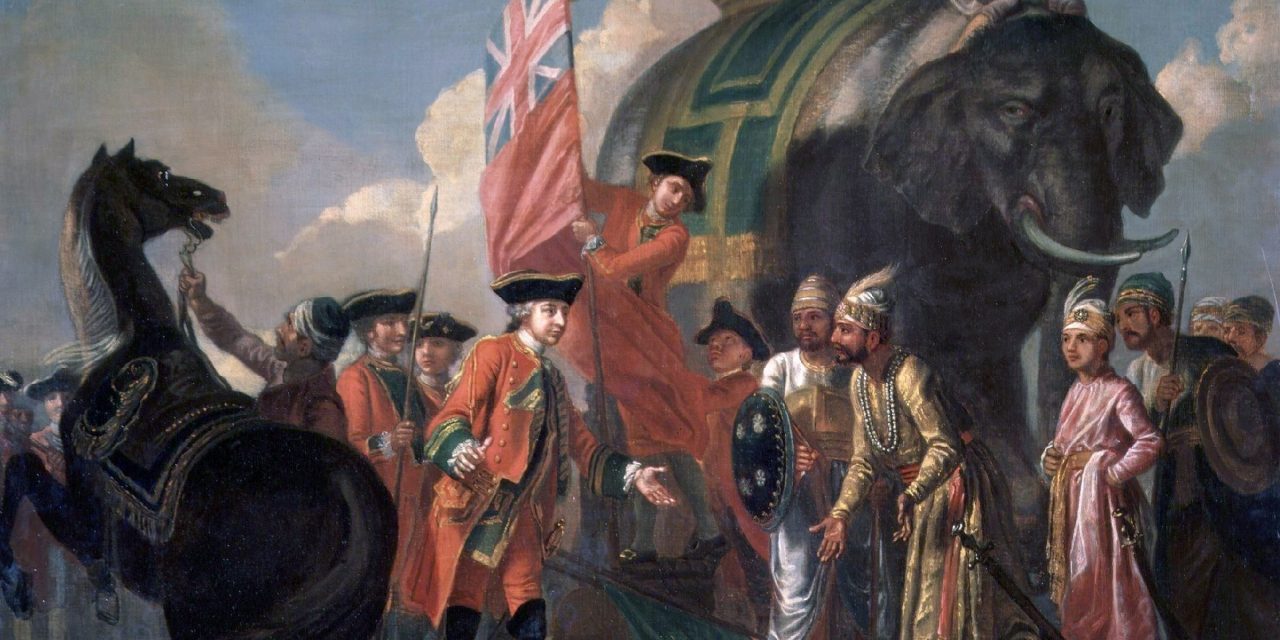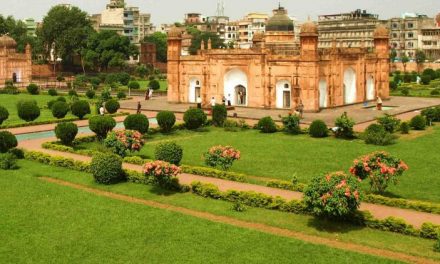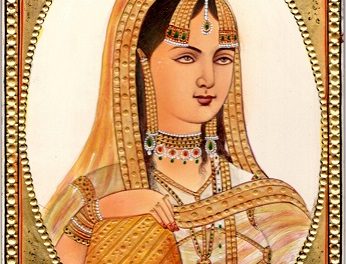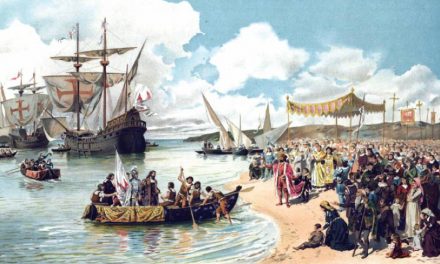
When we look at Bangladesh today, it is hard to imagine that this third world country is mostly responsible for the development of present Europe. Back in the 18th century, when the Mughal dynasty was considered one of the richest and most prosperous in the world, Bengal, the province that extended from Dhaka (Bangladesh) to Benaras (North India), was the business hub of the empire bringing in the highest revenue for the subcontinent. To get a better understanding of how much the Mughal Empire contributed to making England so wealthy, a visit to the Powis Castle in Powys, Wales would help us a lot. This fortress is considered a national treasure and is known for housing the loot brought back by Robert Clive and his son, Edward Clive from the Mughal Empire. The Mughal collection this castle holds exceeds all other public monuments and museums in the world, even India.
How is it possible that the richest country on Earth, generating a huge portion of the world GDP, lost all its valuable possessions to a country that barely survived. Nawab Sirajuddaula was the Nawab of Bengal at the time, which had a population of about 25 million, four times that of then England. The Ganges delta was wealthy in various aspects- from acting as a granary for the entire subcontinent to manufacturing fine muslin cloth. The riverine delta supplied abundant fish and jute and had great steel industries that produced the finest steel from iron ores imported from Tanzania, Africa.
Aurangzeb was a great ruler but he expanded the empire to a point where it was going out of his reach. It stretched over 3.2 million square kilometres, including parts of what is now India, Pakistan, Afghanistan, and Bangladesh. The imperial treasury had exquisite collections of gems, diamonds, and gold that probably made Aurangzeb the richest man of his day. Despite stretching the empire so far, he carefully ensured full control of the provinces by appointing governors to handle the administration of each area. The flow of revenue from these provinces was managed smoothly with the setup of the new administration system. However, the introduction of the Jizya taxation system started creating problems within different provinces. Troubles with Marathas from the Deccan, Sikhs and many others started weakening the empire.
The death of Aurangzeb 1707 confirmed the decline of the Mughals. His son Bahadur Shah, who was already in his sixties, hastily ascended the throne but could not survive the constant turmoils from the Marathas and Sikhs for long and died soon after. At this point the Mughal court was infested with court politics and drama. The heir apparent, Azim us Shan and his two brothers were murdered due to the instigation of an army general, Zulfiqur Khan. With no heirs to take control, Jahandar Shah, known for debauchery, was hoisted as the new emperor. Azim us Shan’s murder led to his eldest son, Farrukhsiyar to raise an army an march to Delhi from Bengal. Two Sayyid brothers Hassan Ali and Hussain Ali aided him during this period and helped him kill both Zulfiqur Khan and Jahandar Shah. This battle gave the two brothers tremendous power in the court. The Deccan regency was obtained by Hussain Ali as payment for his services. Yet a divide formed between Hassan Ali and the Emperor; Farrukhsiyar was blinded by the Ali brothers, and imprisoned until death. The new king was Raushan Akhtar, Muhammed Shah ‘s grandson. By forging an alliance with nobles from Afghanistan and Iran, Raushan broke the monopoly of the Ali brothers.
No other heirs could bring back the Mughal Empire’s glory; the rot was too far gone. The new diwan, Chin Qilich Khan, an Afghan noble who was given the title of Nizam ul Mulk, tried to arrest the decay in the empire but left for the Deccan instead seeing the rusty, rotten condition. He then founded the state of Hyderabad. Eventually, Bengal and Oudh, provinces that accounted for a bulk of Mughal revenues, broke away. Local rulers that acknowledged Mughal overlordship were of no good. The Marathas, under the leadership of Baji Rao, got hold of a huge chunk of central India and were advancing to attack Delhi. Afraid of losing all control the Mughal Emperor sought help from Nizam of Hyderabad. However, a twist of events increased Mughal turmoils during this emergency.
The Russians and Ottomans had started intervening when the Afghans took over the capital of the Safavid Empire and decided to expand its trading routes. The Safavid Empire was crumbling. The Persians were able to take back their territories from the hands of the Ottomans and overthrew the Russians with the help of Nadir Quli, a Safavid army general. Nadir tried to involve the Safavid Shah Tahmasp II in state affairs, but found him inept, dethroned him, and stated himself, Nadir Shah of Persia, in 1736.
After taking care of the Russian menace, he sought help from the Mughals to stop Afghan invaders from escaping Kabul. Upon receiving an ambiguous message from the Mughal court, he took matters in his own hands and captured Kandahar, from where the Afghans launched the attack. He then occupied Peshawar and Lahore and sent a word to Delhi stating that he had arrived in India to punish the courtiers who had shown disrespect.
The gauntlet was thrown. The Mughal army marched to Karnal in Punjab to encounter Nadir Shah. The Persians were avoiding the main Indian army and attacked the auxiliary troops brought in by the Mughal commanders instead. Chopping down the Indian armies one by one his army advanced. Camels armed with gunpowder were set loose on Indian lines, creating chaos on infantry and elephant corpses. The Mughal commander-in-chief and governor of Oudh were captured. Seeing their forces in disarray, the Mughals retreated and the Emperor, Muhammad Shah, sued for peace.
Burhan ul Mulk, the governor of Oudh betrayed the Mughals and joined hands with Nadir Shah suggesting him to demand a ransom of twenty million rupees. He also demanded the position of commander-in-chief of the Mughal armies but the emperor appointed Nizam ul Mulk instead. Angered by the decision of the emperor, he conspired against them and advised the Persian invader to raise the ante with Delhi. A face-saving formula was planned, and the humble Mughal Emperor brought the triumphant Nadir Shah to the capital, probably as his “guest.” While negotiations were underway on compensation, there was a rumour that Nadir had been killed.
Delhi’s ill-advised citizens went into the warpath, killing several hundred Persian troops. Infuriated, Nadir Shah had given orders for mass murder. Delhi had not seen such destruction since the invasion of Timur. Over a hundred thousand citizens were killed. To restore harmony, the emperor offered one of his granddaughters in marriage to Nadir Shah’s son. Shah Jahan’s peacock throne was given away as “dowry” along with the entire assortment of gold, diamonds and rubies in the Mughal treasury. Furthermore, Nadir ‘s soldiers tortured the nobles in giving up vast quantities of hoarded riches. Nadir is said to have required 70 camels to load up the gold and the gemstones. So huge was the amount of loot Nadir Shah forgave tax collection in his vast empire for three years upon returning to Persia. He also annexed all the territories to the west of the Indus River, which incorporates most of what is Pakistan today.
The invasion of Nadir Shah ruined whatever remained of the Mughal emperor’s dignity. The Marathas moved to fill the political-military void and advanced towards Delhi from central India. The Sikhs regrouped in Punjab to rejoin their armed war. In practice Bengal, Oudh, and Hyderabad became independent. These provinces brought back vast revenues to the Mughal court and losing control of them led to the confinement of the Mughal rule within the few square kilometres around Delhi. The Mughal was just a shadow of its old self at the time.
The Mughal Emperors had appointed Nawabs to look after the administration of different provinces. With the provinces becoming independent, the Nawabs also went astray. The successful province of Bengal was run by Nawabs Aliwardi Khan and Murshad Quli Khan. After the death of Aliwardi Khan in 1756, his grandson, Siraj Ud Daulah took his position. Upon the new takeover, Mir Za’afar, Aliwardi Khan’s brother-in-law, was disheartened as he had hoped to become the new Nawab of Bengal. Court politics and several plots in the Bengali court of Murshidabad created an unintended opening for the British East India to set foot into the territory and take control. The company was content with the trading relationship and did not approve of the commercial expansion of Bengal.
When Fort William at Calcutta was reinforced by the East India Company against the governor’s expressed wishes, Siraj Ud Daulah was furious. At his orders, many Englishmen were locked up in a small cell to suffer. The bulk of the hapless prisoners did not survive Bengal’s summer heat and the British called the death chamber the “Black Hole of Calcutta”. The idea of the black hole was somewhat an exaggeration of the authentic story by the British. In reality, the number of prisoners who suffered were relatively low compared to how the story has been conveyed by them.
In 1757, the British were the strongest sea powers in the world, displacing the Dutch and introducing even better maneuvers than the French. They established themselves in both America and Asia, forming colonies in America, Canada, West Africa, India and Australia as well. The slave trade had made England rich, and its frontiers had reached out to control the great Asian and African landmass. The British East India Company had also held the strategic ports of Calcutta , Bombay and Madras on the Indian subcontinent.
The British governor, Robert Clive who led company administrations decided to form allies with Mir Za’afar to bring Bengal under his control. He was a very clever and competent administrator who gathered all information about the court in Murshidabad and Mir Za’afar. He promised to appoint Mir Za’afar as the Nawab of Bengal if he supported the British forces in the upcoming fight against Siraj ud Daulah. Clive got all the zamindars, bankers and Mir Za’afar on his side and called Siraj Ud Daulah for battle.
The Bengal forces met the British on 23rd June 1757 at the Battle of Plassey, a day tainted with infamy in India’s history. Unaware of Mir Za’afar’s motives, Siraj Ud Daulah headed to the battlefield with 50,000 troops commanded by Mir Za’afar. On the other hand, the British had mere 3,000 soldiers to counter the Bengals. Mir Za’afar betrayed Siraj ud Daula as soon as the battle began, and with the bulk of his army joined the opposition. Siraj ud Daula was defeated. He was murdered some time afterwards. Clive, having Bengal at his feet, made Mir Za’afar the Nawab as promised. In return the British were showered by Mir Za’afar with untold wealth. Clive himself acquired a million pounds of gold and precious stones. The company was exempt of all taxes and became greedy for more wealth.
Mir Za’afar upon sensing their loss, became reluctant to hand over any more riches to the British. But Clive was not satisfied and replaced Mir Za’afar with Mir Qasim. The British now had all the valuables of the Mughals accumulated over centuries of their rule. Unable to sate the company’s unquenchable thirst for wealth, Mir Qasim traveled westward to seek the Nawab of Oudh ‘s assistance in expelling the British. Oudh, in turn, had asked the Mughal court in Delhi for support. The Mughals could not support an army without monetary backing. The Mughal armies were nothing like they were before; they were weak and incapable of supporting a battle. Nonetheless, help was sent to the Nawab of Oudh by the Mughal Emperor to meet the British forces at the Battle of Buxar in 1764. The Indians were no match for the strong British troops with their cannons and rifles. The Mughal Emperor then surrendered to the company upon suffering a disastrous defeat.
The document signed after this battle became the legal basis for the beginning of the British rule. Robert Clive’s rule did not last long and his successor, Warren Hastings took over. Hastings was a ruthless ruler and made sure to extract every ounce of gold that he could possibly get his hands on from the subcontinent. While flooding the Indian market with cheap cotton goods manufactured in Lancashire he imposed heavy taxes on Indian producers. He waged war on the Rohilkhand Afghans, plundering the northern territories as he progressed. He starved Oudh’s Begums (princesses) and oppressed their servants using another traitor as his weapon, Asif ud Daulah, until the Begums surrendered more than a million pounds in state jewels.
The Battle of Plassey and later the battle of Buxar became turning points for Bengal, without which we probably would still be one of the most prosperous business hubs for the entire world. The loot that the British transferred from Bengal throughout their rule in the subcontinent was the sole aid to the Industrial Revolution in Europe.
It is noteworthy that historians date the Industrial Revolution from 1758, a year after Plassey ‘s war. Investment is the force generating impetus for creativity. Without capital, inventions have the same power that dead rocks have. Capital infusion into England greatly enhanced innovation. Technologies quickly appeared in succession. The flying shuttle was developed in 1760, the spinning jenny in 1764, the steam engine in 1768 and the “mule” in 1779. Prior to the Battle of Plassey, England’s iron and steel industry was no more advanced than Bengal’s. Europe had already surpassed Asia in technology within a century of after Plassey.
Bengal’s loot hailed the emergence of the capitalist system. In addition, industrialization consolidated capital accumulation. The British successfully fought off Tippu Sultan of Mysore (1770-1799) and conquered India with the riches of Bengal at their disposal.
What Manchester was considered in the 19th Century, Bengal was in the 18th century. Bengal, once Asia ‘s richest province, became destitute within a span of ten years after its British capture. Therefore, the battle of Plassey must be marked as one of the most important events in the history of Bengal and the Indian subcontinent.





